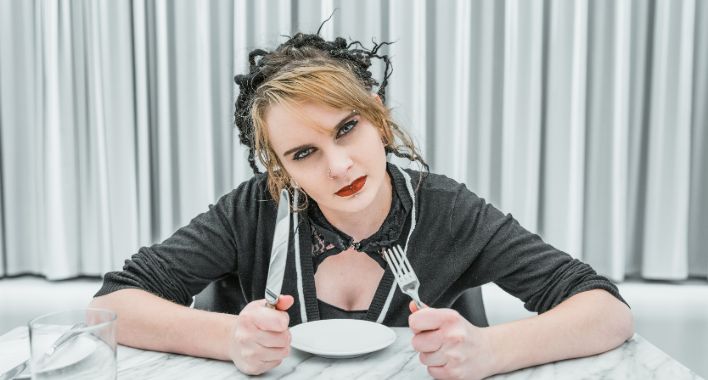The world of fiction, captured above all through literature and film, provides our imagination with an endless number of characters, types and even caricatures that end up becoming authentic references of behaviour and personality. Some of them are more positive, they exemplify the virtues we wish to possess or to which we should approach. Others, on the other hand, are apparently more undesirable, either because their mediocrity or smallness distances them from the admirable, or because they are the living example of evil. The latter, even within their diversity, are the ones we would include in the drawer of anti-heroes.
Be that as it may, what is interesting is not only that there are bad, good, unlikely heroes or poor devils in our shared narratives. What is interesting is that, whether we want to admit it or not, it is not always the “best” characters that we like the most. Far from it, while the good characters arouse our moral applause, those who take the laurels for our fascination and, why not, for our secret desire to identify, are often the most despicable, the least successful, the most twisted.
We’re fascinated by the evil
It wasn’t us, but Mae West, who first realized that good girls go to heaven but bad ones go everywhere. No wonder then that a well-built anti-hero turns out to have more spark than the best of Atticus Finch. But why? Probably because there are not always absolute criteria, but relative ones, regarding what is admirable and what is not, in the same way that it is not always clear which decisions are right and which are wrong.

It is not in vain that the moral standards by which we are governed and indicate what is good/decent/recommendable/necessary/reputable vary greatly from one human being to another, even among members of the same group of friends, family, city, country, historical moment, etc. On the other hand, we must not forget that, as viewers, we can admire certain qualities of reprehensible characters, or approve of some of their decisions, without this implying that we approve of them all, or that we identify with them one hundred percent. Good characters, also good “bad” ones or “questionable heroes” have a characteristic in common with real human beings: they have virtues and defects, their identity is full of nuances.
The evil that is valid to be praised in fiction should never be transferred to the realm of the realIn this way, their charm comes precisely from their nuances, from their contradictions, from what the viewer is not expected to do. It also comes from their unlikely behaviour and, of course, from the viewer’s good ability to judge the character’s behaviour in its context and not just in itself. That is, of their ability to understand the character in relative and not absolute terms.
It is important to clarify that this is not equivalent to justifying them but rather to understanding them from a point of view that does not judge, from a deeper and more complete view of reality. That is what allows, for example, to intuit that Joker is not a mere jerk who goes around killing people or that Don Draper is not, by any means, the classic day/night beauty. In this way, it becomes clear that there are good explanations for what at first sight seems just the easy stereotype that precedes an easy but surely unfair trial.
I like the evil doers: am I terrible?
Not at all. Tastes and identifications are not a table of the law about the sanctity or moral rectitude of the audience of a work of fiction. They shouldn’t be and can’t be. Normally what happens is not that we like the evil of a character, even though it may fascinate us, but that we like the character in spite of its evil. Okay, sometimes it is because of his wickedness, but always understanding that he is a character and always knowing how to distinguish that what he does can fascinate us as fiction, as narration, but that it is not applicable or justifiable to take it to real life, which must necessarily be governed by other codes.
Knowing how to separate what is valid for art but not for real life must be an ever present consideration in this subject. Once this has been clarified, it may be striking how much we praise some characteristics of this type of character in contrast to how little we censor their most remarkable features.
It is possible that this is due to a number of reasons. For a spread of opinions due to a lack of own criteria, for only seeing the surface, for the rigidity of not knowing how to distinguish reprehensible actions from justifiable ones and approving – or saying that they are approved – of the former.
Or simply because, in spite of being characters with despicable characteristics, they are so well built that they know how to hit the target in the viewers’ sympathy or good taste. It should not be forgotten that, unlike what happens in real life, in the field of the arts (whether in literature, cinema or paintings, which are nothing but different forms of narration) there is a paradox in which the ugly, the detestable, the evil or the unpleasant are beautiful provided that they are sufficiently well-armed: well-narrated, aesthetically pleasing, wisely designed in their depth.

Some say that viewers tend to admire these anti-heroes or, to call them by their real name, these authentic bad guys – but, instead, they hate anti-heroines. Being rigorous, I have no explanation for it, if such a phenomenon is real. If we were to find it, a plausible hypothesis would be to look for it in a sexist bias according to which bad women are more unfriendly than ” bad guys”, as if the average viewer tended to think in terms of “unbearable hags versus interesting bad guys”. However, I must insist that this is the easy and fashionable explanation, but it is only a first opinion. After all, it is clear that there are anti-heroines that can be as magnificent as their male counterparts. For instance, there’s the terrifying Patty Hewes from Damages, the disturbing Claire Underwood from House of cards, or the, what the hell, delightful Maleficent.
Irresistible wolf’s mouth
It seems that, by transferring all this to the real world, we feel an irresistible attraction to danger. After all, often the dangerous is not just dangerous. It is true that sometimes we are attracted by danger for danger’s sake, or risk for risk’s sake, but very often what attracts us is not so much the dangerous part as what surrounds it.
That is why what attracts us to drive at 200 Km/h is not so much the high probability of dying in the attempt but the excitement that the perception of that speed is for our body. What attracts us from a dark alley is not the possibility of being stabbed in it, but the mystery of the unknown. However, all this is speculation, given that human behaviour – even if it sometimes seems very simple or very incoherent – has complex motivations and it is not always possible to determine its components, even for those who perform them.





